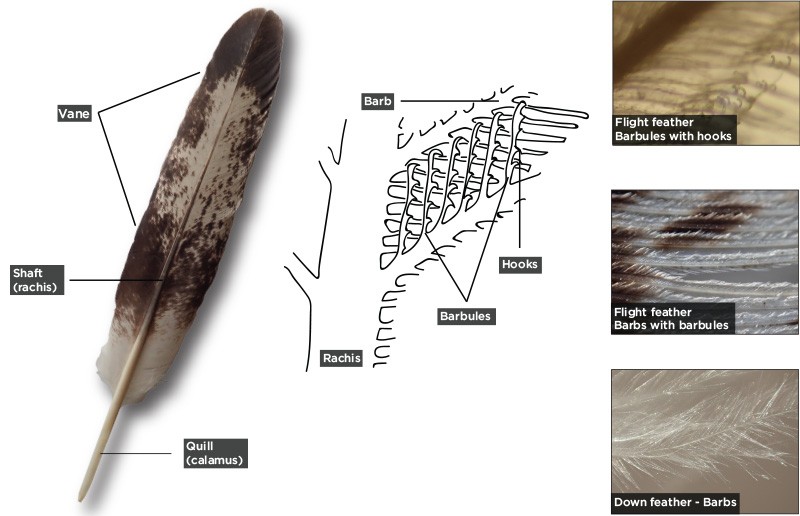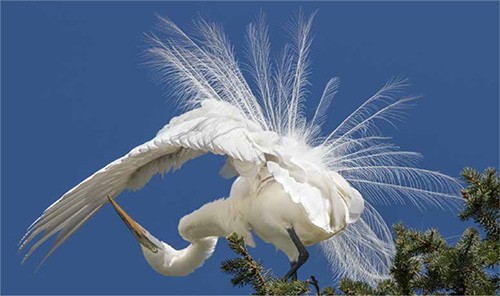Unit 1 • Lesson 1
Perspective – What is It? It’s all in how you look at things.
1.1 – What is perspective?
Let’s start by examining something that is very important throughout these lessons as well as in life. And that’s a concept called perspective, which ultimately leads to how you view yourself, other people, and the world in which you live.
Perspective is the way you “see” something, a particular attitude toward something, a way of regarding something, a point of view. Perspective may depend on your experiences, your personality, your ability to consider things in relation to one another. Perspectives you develop will have a strong determination on what you think is important and meaningful in life and how you interact and live with what’s around you, whether it’s people, animals, plants or inanimate portions of the environment such as water and air.
Perspective is also influenced by your physical position. For instance, viewing objects from a particular location or angle allows you to gain an impression of an object’s height, width, depth, and position in relation to other objects. If you’re viewing an object from the top of a mountain, it will look different in size and shape as opposed to a view of the same object from the valley floor. Viewing an object through binoculars or a microscope also offers different perspectives. And since your brain processes what you see, sense or touch, developing perspective necessarily involves a mental outlook that synthesizes everything.
When developing perspective, it’s important to consider multiple points of view; more than one viewpoint will broaden your overall perspective and help you better understand what it is you’re examining.
1. 2 – Understanding multiple viewpoints
Let’s do something simple to illustrate how taking more than one viewpoint into consideration – multiple viewpoints – will help you better see and understand the world around you.
There is a photograph of the moon on page 9. Pick up your book and hold it in front of you with your right hand, at arm’s length. Now close your right eye and put the thumb of your left hand about six inches in front of your left eye, so that it covers the photo of the moon. Without moving your thumb, quickly open your right eye and close your left eye. Has anything changed? What kind of change was it?Now open both eyes to view the same moon photo. What do you see? Did the moon seem to shift position? You’re probably saying “yes,” but is it really the photo that’s shifting? Obviously not. What’s changing is your viewpoint of the photo – your perspective – as you open and close each eye.This simple exercise in multiple viewpoints and how they influence perspective is the result of the type of vision that humans possess. It’s called binocular vision and it’s made possible because our faces have two eyes that are set slightly apart and face forward. Each eye sees the same object, although from a different angle or perspective. Your brain
compares the differences that each eye sees while combining them into a single image, to better calculate distance and motion. This nearly instantaneous process of comparing visual differences improves your depth perception so that you see and interact more accurately with the threedimensional world in front of you. To add depth to what you see, two perspectives are better than one. Our simple exercise proves it.
1.3 – A better visual perspective: the bird’s-eye view
Some animals, often predatory birds such as bald eagles, also have binocular vision, which gives them a great advantage when they’re hunting. Eagles fly high in the sky to gain an overhead – or aerial – perspective of the ground below and prey that may be there. This “bird’s eye view,” made possible by an eagle’s ability to fly and its binocular vision, allows an eagle to scan lakes and rivers far below and focus on locating a favorite prey: fish.
But eagles and some other predatory birds are able to employ yet another perspective to their hunt thanks to specially designed eyes that make faraway objects appear 2.5 times closer than what human eyes would see. By combining binocular and magnified vision from way up in the sky – the “bird’s eye view” – it’s no wonder that an eagle is so successful in first locating, then zooming in on, and finally snatching a fish from the water’s surface. The eagle’s ability to use multiple perspectives maximizes its chances of a successful hunt.
1.4 – One bird, many parts
We’ve just read an example of how an eagle uses multiple perspectives to locate and catch prey, and we’ve learned the wisdom of gathering several sources of information to make one intelligent choice. But there’s more to the magnificent eagle’s story of survival than just a pair of amazing eyes. In order for us to fully understand and appreciate our national bird, we must first look at the bald eagle from an individual perspective, viewing it as a single, individual organism.
As with any living organism, an eagle’s outward appearance reveals a number of physical characteristics: color, size, shape, and body parts such as feathers, wings, beak and claws. The eagle’s physical form, combined with the arrangement and construction of its various parts, is called its structure.
Structure can be examined to determine function, which is the way an eagle or other organism utilizes and takes advantage of its form and parts to live and survive. Structure and function work together; they make an organism whole.
For example, we correctly perceive that an eagle is a predator (an animal that kills and eats other animals) because of the shape and size of its beak and claws. The claws’ structure is long, sharp and turned inward, a perfect design for the function of grasping and holding onto prey. The beak’s structure is large, curved, and sharp . . . a superb design for its function of tearing pieces of flesh from prey. Using the eagle’s beak and claws as examples, you can see how each part’s structure and function work together to help the eagle survive, as an individual living organism. But a beak and claws won’t bring home dinner by themselves. Broad wings, covered with large, long feathers that catch and move air are also needed to hunt and survive.
Wings are structures whose function gives the eagle the ability to fly. An eagle can fly high, soar or dive down quickly depending on how it positions its wings and spreads or tucks its feathers. Again, structure and function work together to help the eagle survive. Now add incredible sight to the equation and you have one of nature’s most effective birds of prey.
As you can see, structure and function are “two sides of the same coin” that exist because of their connections to each other. Looking at an eagle or other living organism from perspective of interconnectedness, like the interconnection between structure and function (wings and flight, claws and grasping prey) allows us to see something more completely, and better understand how something works as a whole.
1.5 – Structure and function: top-down or bottom-up?
The structure and function of animals’ body parts can be viewed at different sizes or scales and in two basic ways: 1) as a larger whole broken down into smaller parts, units, or components (a top-down perspective), and 2) as smaller parts, units, or components built up into a larger whole (a bottom-up perspective).
Switching your focus between the top-down and bottom-up perspectives can provide insights into how something is put together or structured at different scales. By zooming in and out, looking at the connections and interrelationships between components at different scales, you can see how the structure functions as a whole. Let’s see how this works in Activity 1 (next page). Activity sheets and other materials will be provided by your teacher.
Lesson 1 • Activity 1
Feather structure, function, and scale from a top-down perspective
Let’s use a top-down perspective to view an individual organism, the eagle, as a whole; then we’ll look at one of its parts, a wing. Watching an eagle fly, we can see its wings are made of smaller parts, such as flight feathers. By examining a flight feather, you can see it, too, is made of smaller parts. Take the flight feather provided in your activity bin and set it on a white sheet of paper. Now use a pencil to trace its outline, or draw it freehand.
Look at the feather. Then, using the diagram below as a reference, use your pencil to draw and label the feather’s shaft (rachis), quill (calamus), and vane. Observe the vane. Describe what you see? Now use your magnifying glass to look closer at the vane. What do you see now? Is the vane one piece or does it have sections? Is there a pattern to these sections? Draw the pattern of the vane’s sections – called barbs – on the flight feather you drew on the white paper.
Now view a portion of the vane using a microscope at low magnification. View the barbs. Describe what you see. Do the barbs have sections? Is there a pattern to these sections?

(left) Eagle feather and parts. (middle) Drawing shows barbules hooking together to form a tight, wind-and-weatherproof barrier. (right: photos from top to bottom) Microscopic image of barbules with hooks (magnification~100x); tiny barbules on individual barbs, which run left to right across photo (magnification ~10x); down feather barbs have no barbules with hooks, making them fluffy and able to trap body heat and keep bird warm (magnification ~4x).
Now draw a barb and its sections – called barbules – below the drawing of your feather. Use the diagram as a reference and label the barb and its barbules on your white paper. If you increase the magnification of the microscope to view the microstructure of the barbs, you should see tiny hooks on some of the barbules that interlock with other nearby barbules without hooks. It’s similar to the way Velcro works.
Question 1: What do you think is the function of the microscopic hook structures on the barbules?
Next step: Take the small, fluffy looking down feather and examine it with the magnifying glass. Now examine the down feather’s barbs under the microscope.
Question 2: How is the microstructure of the down feather’s barbs different than the barbs of the flight feather?
Question 3: What do you think is the function of the microstructure of the down feather’s barbs?
Question 4: Compare the structure and function of the flight feather’s barbs and barbules to the barbs of the down feather. What general statement can you make about the connection between the structure and function of the two different feathers’ barbs?

![Unit 1: The Ecological Perspective [School]](https://culturalecology.org/wp-content/uploads/2021/05/DelawareLehigh-CulturalEcologyEasternPennsylvania-Unit_1.jpg)

![Unit 5: Cultural Landscapes, a Great Acceleration, and the Anthropocene [School]](https://culturalecology.org/wp-content/uploads/2021/05/DelawareLehigh-CulturalEcologyEasternPennsylvania-Unit_5-300x300.jpg)
![Unit 3: Eastern Pennsylvania in the Colonial Period [School]](https://culturalecology.org/wp-content/uploads/2021/05/DelawareLehigh-CulturalEcologyEasternPennsylvania-Unit_3-300x300.jpg)
![Unit 2: The Ice Age Transition, Climate Change, and Native Americans in Pennsylvania [School]](https://culturalecology.org/wp-content/uploads/2021/05/DelawareLehigh-CulturalEcologyEasternPennsylvania-Unit_2-300x300.jpg)